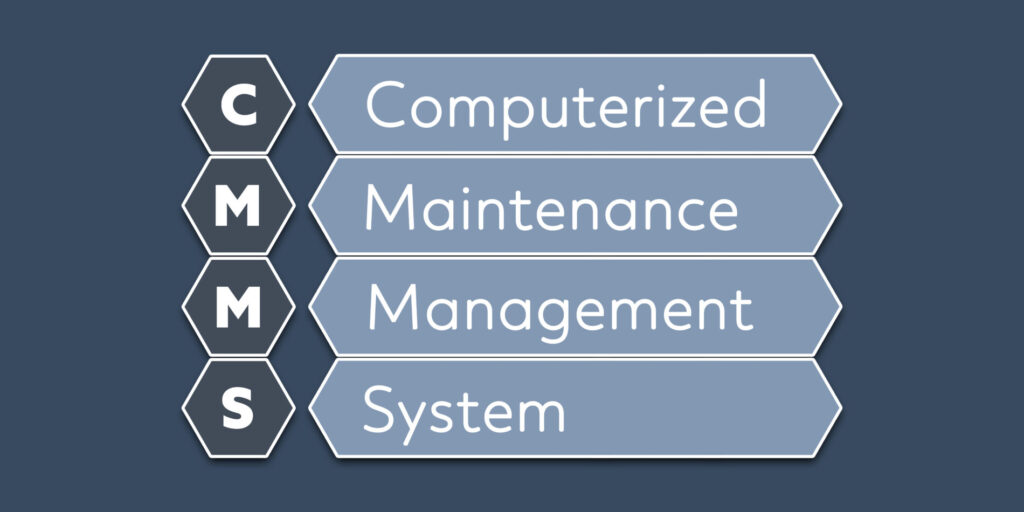CMMS in Maintenance
By: Joseph Anderson
The Importance of CMMS in Maintenance: A Game Changer for Reliability and Efficiency
In today’s fast-paced industrial and manufacturing environments, maintenance teams are under constant pressure to keep assets running efficiently while minimizing downtime and controlling costs. A Computerized Maintenance Management System (CMMS) has become an essential tool for achieving these goals. More than just a digital record-keeping system, a CMMS provides a structured and data-driven approach to asset management, work order tracking, preventive maintenance scheduling, and overall maintenance optimization.
What is a CMMS?
A CMMS is a software solution designed to centralize, automate, and streamline maintenance operations. It helps maintenance teams manage work orders, track asset history, schedule preventive maintenance, and analyze failure trends. Whether used in manufacturing, facilities management, or utilities, a CMMS provides the tools needed to transition from a reactive to a proactive maintenance strategy.
Why CMMS is Crucial for Maintenance Operations
- Improved Work Order Management
One of the primary functions of a CMMS is to manage work orders efficiently. In traditional maintenance setups, work requests are often communicated through emails, phone calls, or even handwritten notes—leading to lost information, miscommunication, and delayed responses. A CMMS streamlines the process by:
- Automatically assigning work orders to the right technician.
- Tracking work progress in real time.
- Documenting completed tasks for future reference.
With a CMMS, maintenance teams can ensure that no critical tasks are overlooked, improving response times and efficiency.
- Optimized Preventive Maintenance (PM)
A major advantage of CMMS software is its ability to automate preventive maintenance scheduling. Instead of waiting for equipment to fail, teams can schedule routine inspections, lubrication, and part replacements at optimal intervals. This leads to:
- Extended asset lifespan.
- Reduced unexpected breakdowns.
- Lower repair costs.
A CMMS can send automated reminders for upcoming PM tasks, ensuring that maintenance activities are completed on time and assets remain in peak condition.
- Data-Driven Decision Making
CMMS software collects valuable data on equipment performance, maintenance costs, and failure rates. By analyzing this data, maintenance managers can:
- Identify recurring issues and failure patterns.
- Make informed decisions about asset replacements or upgrades.
- Optimize resource allocation based on historical data.
Instead of making maintenance decisions based on guesswork, a CMMS enables teams to rely on real-time analytics and insights, leading to more effective asset management.
- Improved Inventory and Spare Parts Management
A CMMS helps track spare parts usage and inventory levels, preventing stockouts or excess inventory. By linking spare parts to specific assets and work orders, the system ensures that technicians always have the necessary parts on hand when needed. Benefits include:
- Reduced downtime by ensuring critical spare parts are available.
- Lower inventory carrying costs.
- Better procurement planning.
- Regulatory Compliance and Documentation
Industries with strict safety and regulatory requirements (e.g., pharmaceuticals, oil & gas, food processing) must maintain detailed maintenance records. A CMMS helps organizations stay compliant by:
- Tracking maintenance activities and inspections.
- Storing documentation for audits and regulatory reviews.
- Ensuring adherence to safety protocols and standards.
By having all maintenance records in one system, organizations can quickly generate reports to demonstrate compliance with industry regulations.
Transitioning from Reactive to Proactive Maintenance
Organizations that lack a CMMS often operate in a reactive maintenance mode, where assets are only repaired after failure. This approach leads to higher downtime, increased repair costs, and lower overall efficiency. A CMMS facilitates the shift toward proactive and predictive maintenance, where failures are anticipated and addressed before they cause disruptions.
By integrating IoT sensors and predictive maintenance tools, modern CMMS solutions can provide even deeper insights into asset health, allowing organizations to optimize maintenance schedules based on real-time equipment conditions rather than fixed time intervals.
Conclusion
A CMMS is no longer a luxury but a necessity for any organization looking to improve maintenance efficiency, reduce downtime, and extend asset life. From automating work orders and optimizing preventive maintenance to improving inventory management and ensuring regulatory compliance, a CMMS transforms maintenance into a data-driven, proactive function.
For companies still relying on manual systems or outdated spreadsheets, investing in a CMMS is one of the most impactful steps toward achieving long-term operational excellence. In the modern industrial landscape, those who leverage technology for maintenance management will gain a competitive edge, while those who ignore it will struggle with inefficiencies and rising costs.
